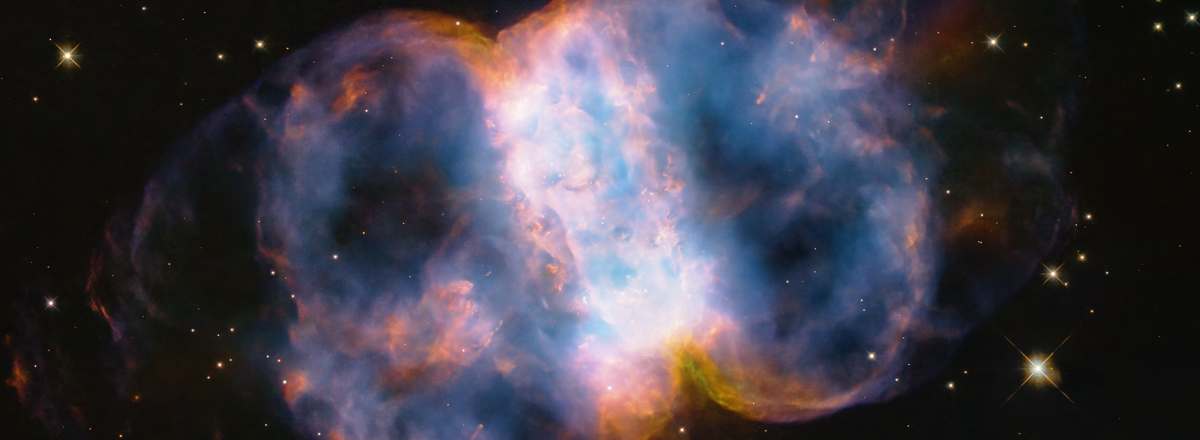Hubble Space Telescope Marks Its 34th Anniversary with a Stunning Image of Little Dumbbell Nebula
The Little Dumbbell Nebula, a planetary nebula formed from the remnants of a dying star, appears in the image as a vibrant cloud of glowing gas, shaped like two interconnected translucent bubbles.

In celebration of its 34th anniversary, NASA's Hubble Space Telescope has captured a spectacular new image of the Little Dumbbell Nebula, also known as Messier 76, located in the constellation Perseus, about 3,400 light-years away from Earth. This event continues the telescope's tradition of commemorating anniversaries with breathtaking cosmic photographs.
The Little Dumbbell Nebula, a planetary nebula formed from the remnants of a dying star, appears in the image as a vibrant cloud of glowing gas, shaped like two interconnected translucent bubbles. This intricate structure is highlighted by colors that signify different gases glowing under the intense ultraviolet light from the central white dwarf star.
Scientists believe that the Little Dumbbell Nebula's unique shape may have been influenced by its binary star system, where one star consumed its companion, leaving behind a thick disk of gas and dust along the companion's orbital plane. This interaction led to the ejection of the ring and lobes of material seen in the nebula today.
The central star of the nebula, now a white dwarf, is among the hottest known, with temperatures 24 times greater than the surface of the Sun.
Since its launch on April 24, 1990, the Hubble Space Telescope has revolutionized our understanding of the universe, contributing to some of the most significant astronomical discoveries of our time, from the dynamics of black holes to the atmospheric compositions of distant exoplanets.

